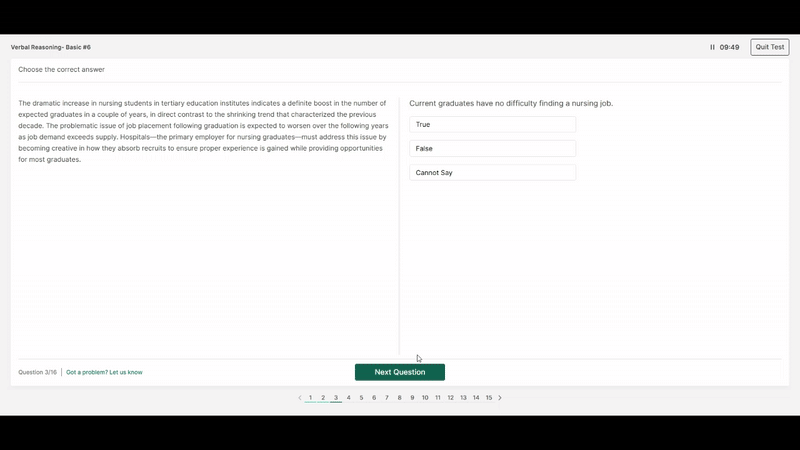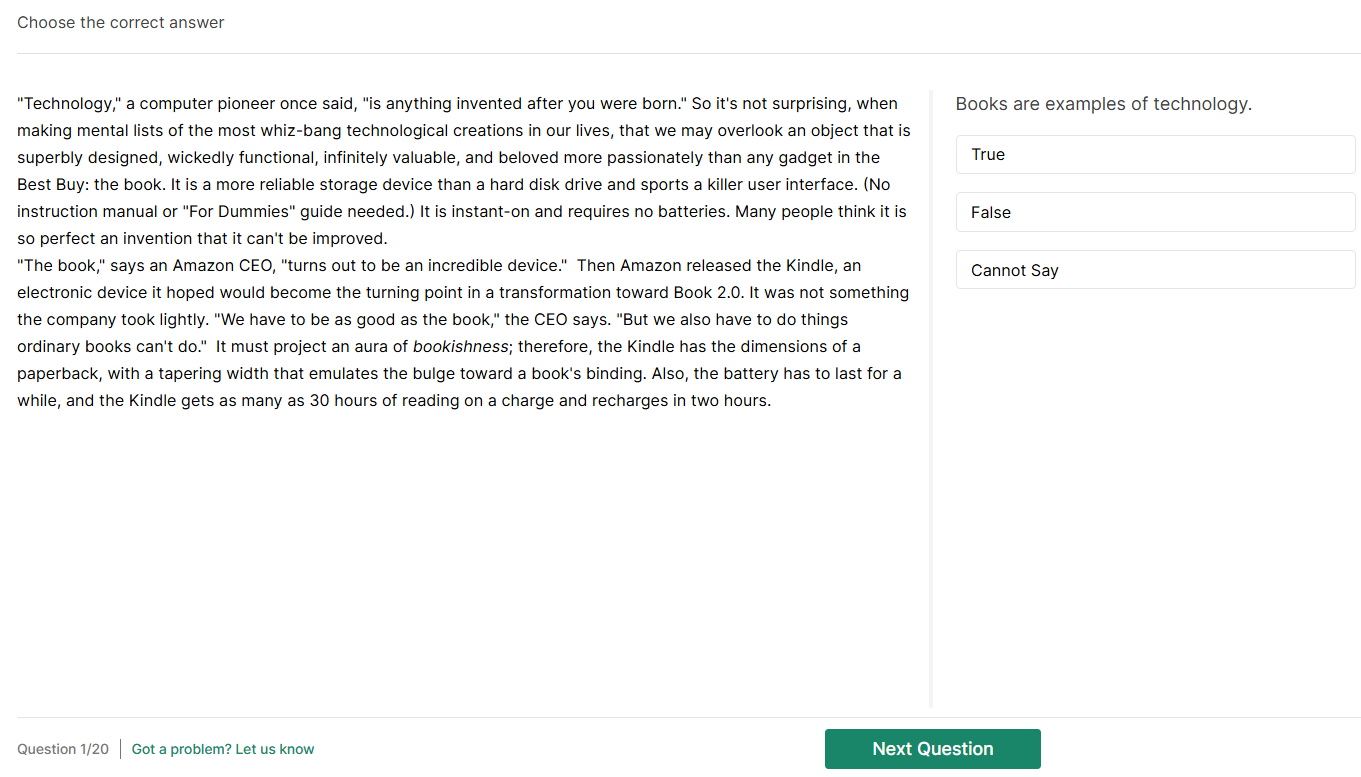Master verbal aptitude tests with confidence
Verbal reasoning tests are a key part of many recruitment processes, evaluating your ability to comprehend, analyse, and draw logical conclusions from written information. Our expertly designed Verbal Reasoning PrepPack perfectly reflects the format, style, and difficulty of real employer tests, helping you develop the accuracy, speed, and confidence you need to succeed.
The Verbal Reasoning Test PrepPack includes:
- Complete coverage of 10+ verbal reasoning question types – gain full confidence tackling every format you’re likely to face in real employer assessments.
- Verbal Reasoning Diagnostic Test – identify your strengths and weaknesses to focus your study time where it matters most.
- Study guides & video tutorials – learn expert tips and proven strategies to improve performance and demonstrate your fit for the role.

- Verbal Diagnostic Test
- 18 True/False/Cannot Say practice tests
- 9 Critical Thinking practice tests
- 7 Written Communication practice tests
- 18 Reading Comprehension
- 15 Vocabulary practice tests
- 5 study guides & video tutorials
Discover the Verbal Questions We’ll Help You Ace
- 18 practice tests, including Saville Analysis style questions
- T/F/CS questions test your precision and logical thinking. They require you to identify whether a statement is fully supported, contradicted, or left uncertain by the passage, without relying on assumptions. Even small wording nuances can change the answer, making practice essential. Strengthen your attention to detail and reasoning skills to approach these tricky questions with confidence.

Taken from our Verbal Reasoning PrepPack
- 9 Critical Thinking practice tests, including Talent-Q Elements Verbal
- Critical thinking questions test your logic, not your language. They challenge you to analyse arguments, identify assumptions, and draw sound conclusions, building essential skills in reasoning, evidence evaluation, and flaw detection.

Taken from our Verbal Reasoning PrepPack
- 7 Written Communication practice tests to enhance your grammar and spelling

Taken from our Verbal Reasoning PrepPack
- 18 reading comprehension practice tests in 3 difficulty levels
- You’ll read short passages and answer multiple-choice questions that assess your English proficiency, reading accuracy, and ability to extract key information quickly. Practising these questions builds focus, reading efficiency, and confidence under time pressure.

Taken from our Verbal Reasoning PrepPack
- 11 vocabulary practice tests, including antonyms, synonyms and analogies.
- Expand your vocabulary, sharpen word associations, and improve your ability to recognise nuanced meanings, key skills for verbal reasoning tests and professional communication.

Taken from our Verbal Reasoning PrepPack
Who Are We?
At JobTestPrep, we’ve helped thousands of candidates pass competitive hiring assessments,
including those at McKinsey and other top consulting firms. Our materials are designed by
psychometric experts and updated based on real candidate feedback to reflect the latest game formats.
Founded in 1992 by David Meshulam, JobTestPrep has become a trusted leader in online test preparation. With 30+ years of experience, 220+ courses, and over a million success stories, we combine expert-crafted PrepPacks with AI tools like our CV Analyzer and Interview Prep platform to help candidates worldwide prepare with confidence.
FAQ's
You will have instant access to your PrepPack, which includes all your practice tests. You can start practicing immediately, learning from detailed explanations and guides, while tracking your performance with accurate, tailored questions to help you understand the correct approach to solving your assessment.
After your purchase, you will receive two emails. The first will contain your payment receipt, and the second will include a login link along with information about our general terms, conditions, and refund policy. To access your PrepPack, simply log in and reset your password.
No, there is no limit. Your progress is saved in your account, allowing you to revisit previous attempts. Our performance tracker helps you focus on the test sections that require more attention.
Yes, you can extend your practice period. Simply contact our customer success team via c.serv@jobtestprep.com.




